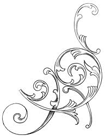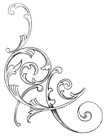Shakespeare, plants, and chemical analysis of early 17th century clay ‘tobacco’ pipes from Europe
By Francis Thackeray
In a recent issue of Country Life, Mark Griffiths1 renews interest in John Gerard’s Herbal2 , published in 1597 as a botanical book which includes engraved images of several people in the frontispiece. One of them (cited as ‘The Fourth Man’) is identified by Griffiths as William Shakespeare, but this identification is by no means certain. The question arises as to whether the engraving represents Sir Francis Drake.3 Gerard’s Herbal refers inter alia to various kinds of ‘tobacco’ introduced to Europe by Drake and Sir Walter Raleigh in the days of Shakespeare in Elizabethan England. One can well imagine the scenario in which Shakespeare performed his plays in the court of Queen Elizabeth, in the company of Drake, Raleigh and others who smoked clay pipes filled with ‘tobacco’. However, there were several kinds of ‘tobacco’ in those days, as indicated in this article.
There clearly is a strong link between Drake and plants from the New World, including corn, the potato and ‘tobacco’. Furthermore, one can certainly associate Sir Walter Raleigh with the introduction of ‘tobacco’ to Europe from North America (notably in the context of the tobacco plant called Nicotiana, from Virginia and elsewhere, and from which we get nicotine).
Thackeray et al. 4 reported in the South African Journal of Science the results of chemical analyses of plant residues in ‘tobacco pipes’ from Stratford-upon-Avon and environs, dating to the early 17th century. This non-destructive chemical analysis was undertaken using state-of-the-art forensic technology at the South African Police narcotics laboratory, by three scientists (Professor Francis Thackeray, Professor Nicholas van der Merwe of the University of Cape Town, and Inspector Tommy van der Merwe). A sophisticated technique called gas chromatography mass spectrometry (GCMS) was used. The pipe bowls and stems had been obtained by Thackeray on loan from the Shakespeare Birthplace Trust in Stratford-upon-Avon. Several of the pipes had been excavated from the garden of William Shakespeare.
Was William Shakespeare high when he penned his plays?
By Francis Thackeray for the Independent, 8 August 2015







Comments